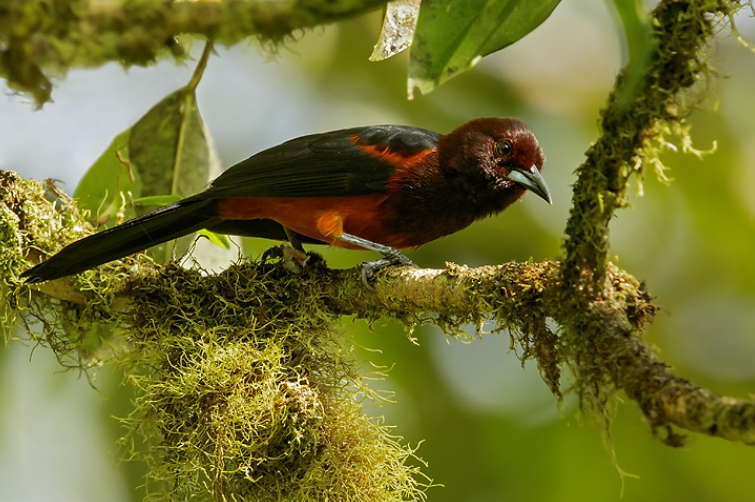Birdfinding.info ⇒ Uncommon and easy to miss. Sites where it has been found consistently include the Caravelle Peninsula and the eastern foothills of the Carbet Mountains at Plateau du Boucher and the Pitons du Carbet Forest.
Martinique Oriole
Icterus bonana
Endemic to Martinique, where it occurs in all native forest habitats and in ornamental gardens.
Despite its apparently wide habitat tolerance, it is thinly distributed across most of the island. This persistent scarcity has been attributed to brood parasitism by the Shiny Cowbird, which reportedly colonized Martinique in the 1940s.
Identification
Unique coloration: deep burgundy-chestnut on the head, neck, and upper breast; paler shades of reddish or burnt-orange on the shoulders, lower breast, and belly; bright tawny-orange lower back and rump; with all-black upper back, wings, and tail.
The bill is dark with a pale bluish wedge at the base of the lower mandible.

Martinique Oriole. (March 2017.) © Glenn Bartley
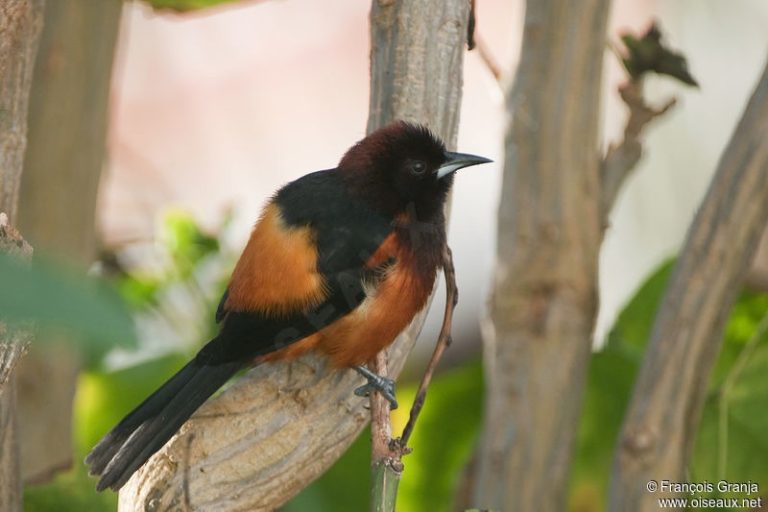
Martinique Oriole. (Caravelle Peninsula, Martinique; March 2013.) © François Granja

Martinique Oriole. (Gros-Morne, Martinique; April 6, 2013.) © jvp0208
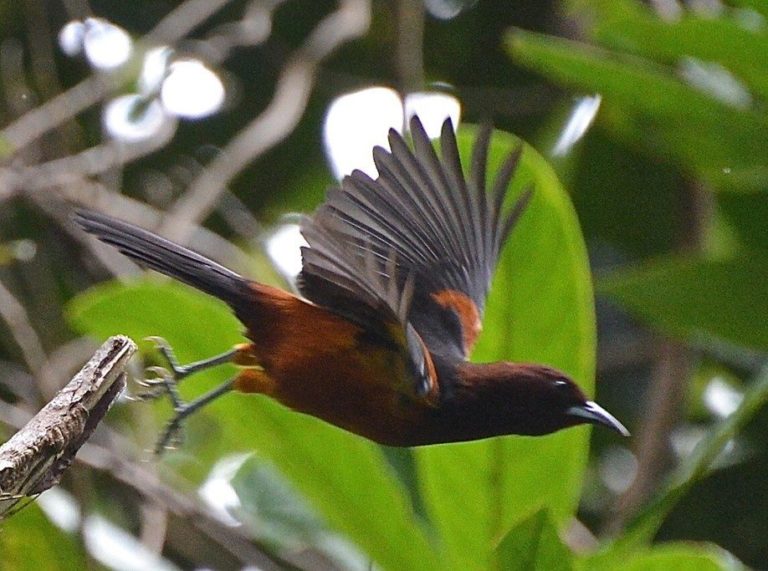
Martinique Oriole. (Gros-Morne, Martinique; April 6, 2013.) © jvp0208
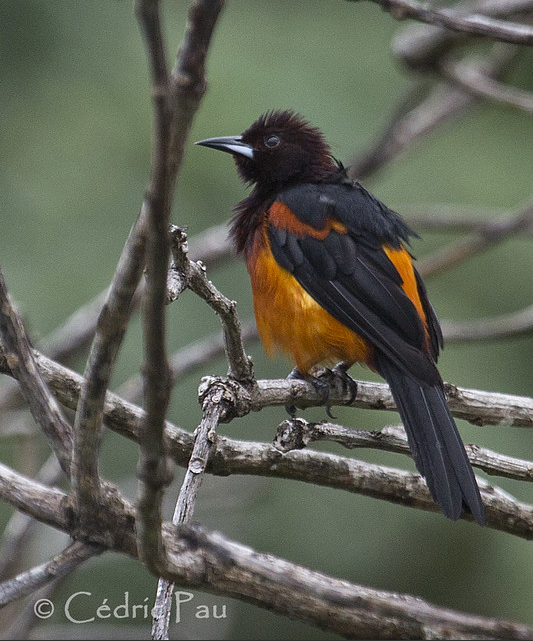
Martinique Oriole. © Cédríc Pau
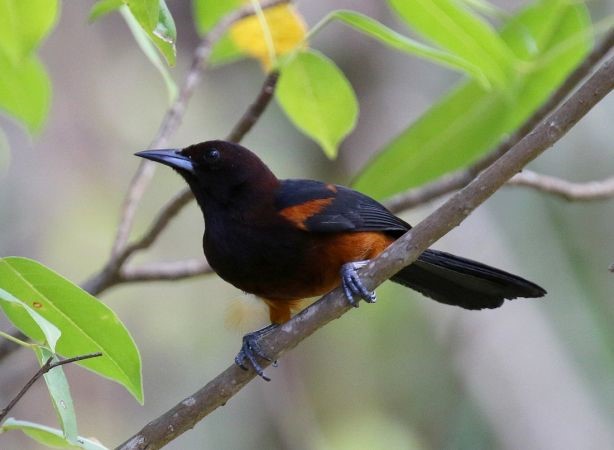
Martinique Oriole. (May 2019.) © Pierre Crouzier
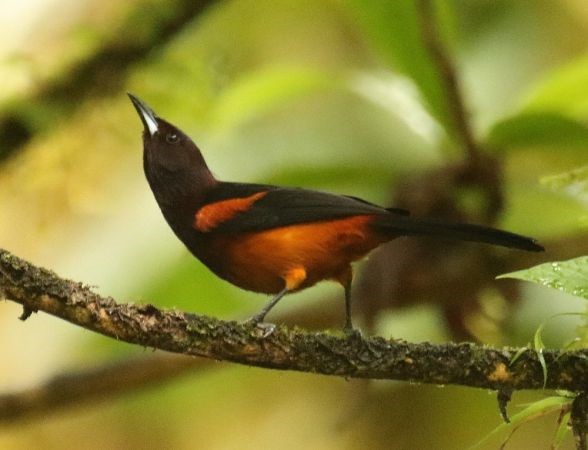
Martinique Oriole. (April 2018.) © Pierre Crouzier

Martinique Oriole. (April 2018.) © Pierre Crouzier
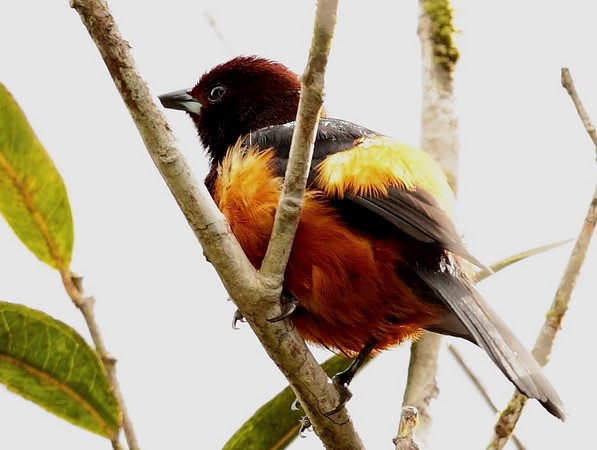
Martinique Oriole. (Martinique; March 2013.) © Colette et Alain
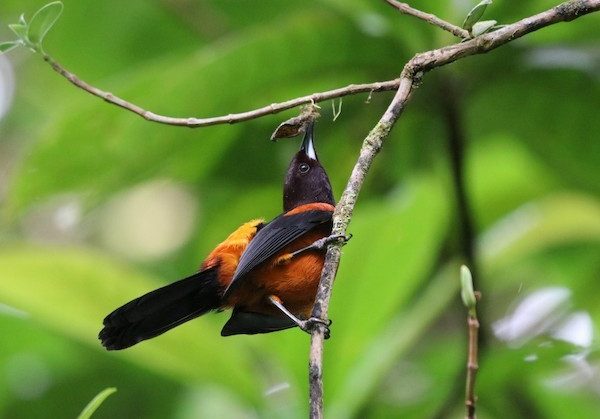
Martinique Oriole. (Plateau du Boucher, Martinique; January 22, 2019.) © Romain Bussier
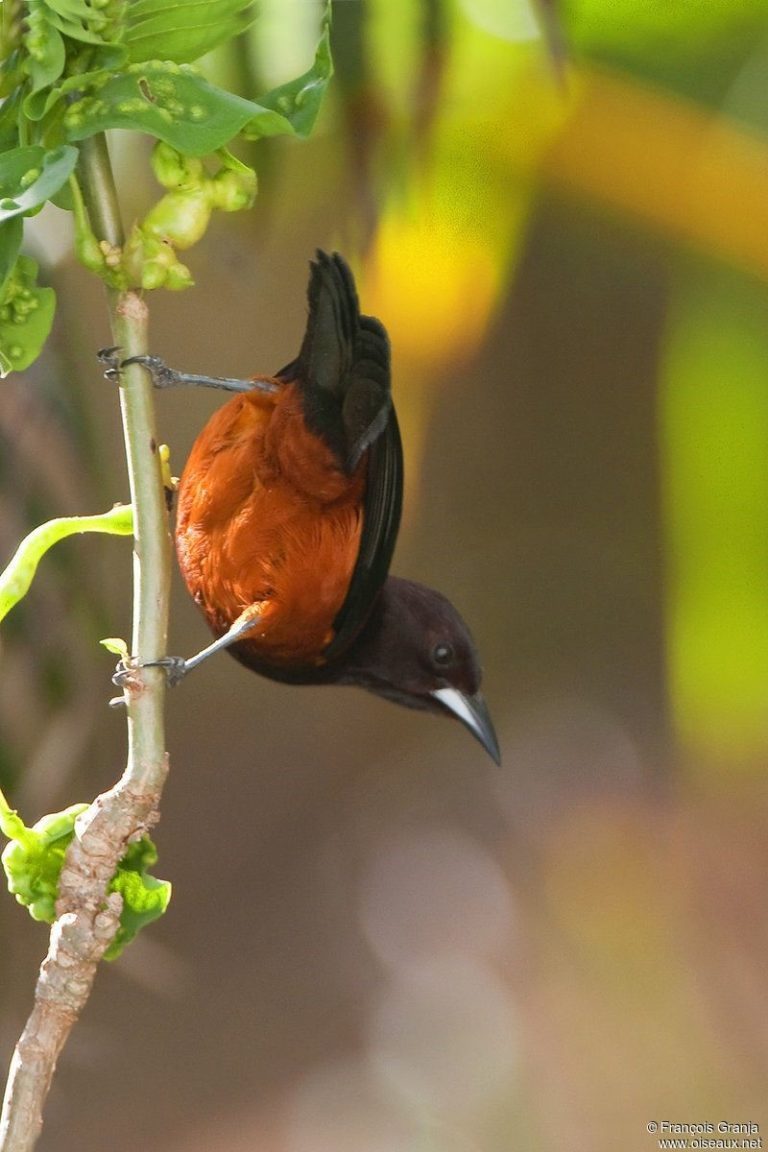
Martinique Oriole. (Caravelle Peninsula, Martinique; March 2013.) © François Granja
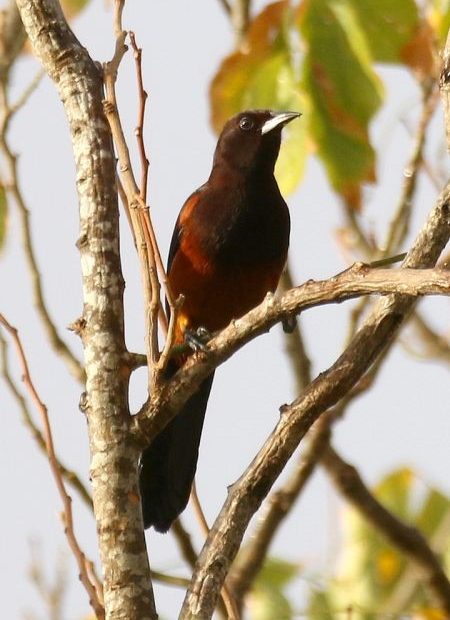
Martinique Oriole. (April 2018.) © Pierre Crouzier

Martinique Oriole. (Plateau du Boucher, Martinique; February 21, 2019.) © Richard Fleming
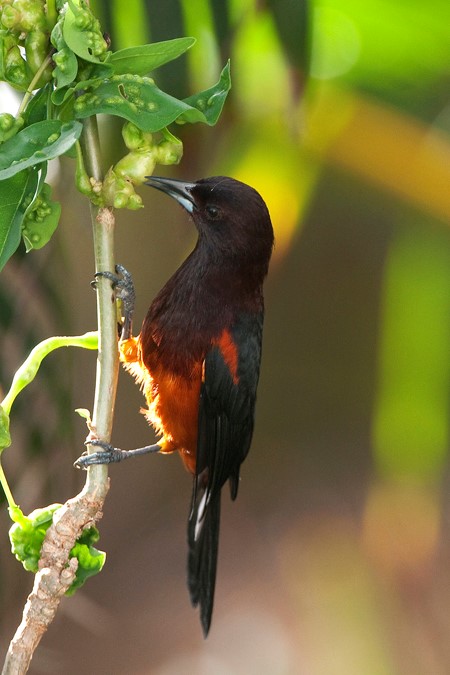
Martinique Oriole. (Caravelle Peninsula, Martinique; March 2013.) © François Granja
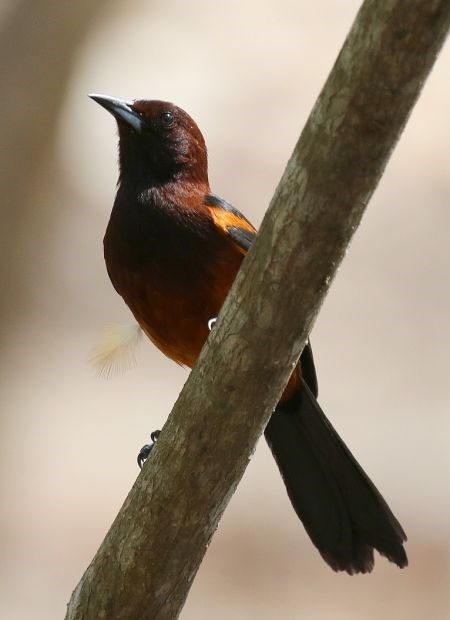
Martinique Oriole. (May 2019.) © Pierre Crouzier
In low light, the chestnut hood often appears black or dark brown, but when well illuminated it takes on a burgundy or maroon sheen.
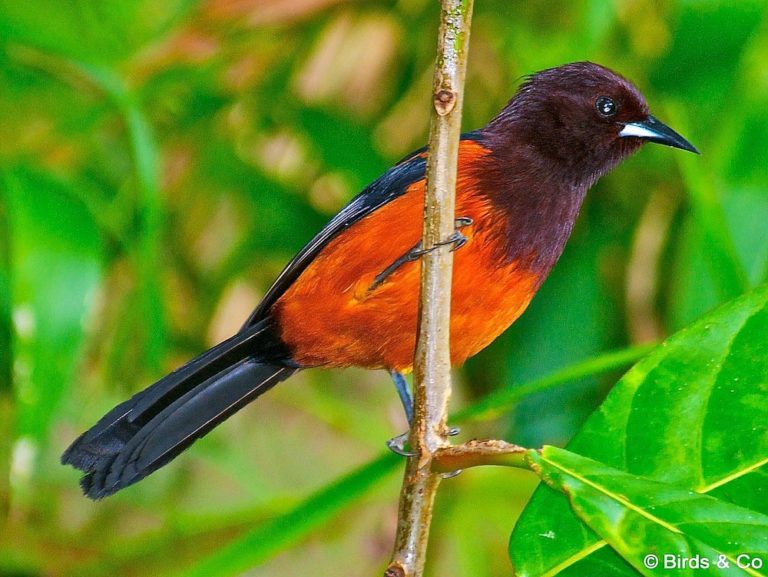
Martinique Oriole. © Birds & Co.
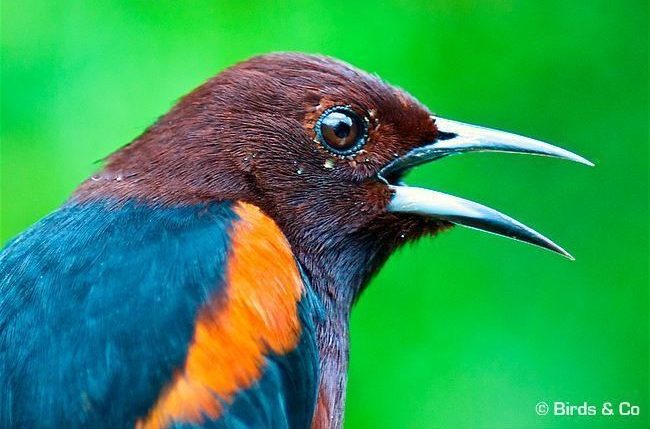
Martinique Oriole—note the contrast between the burgundy head and black back. © Birds & Co.

Martinique Oriole, with hood gleaming pale and purplish. (September 27, 2013.) © Tim Bromilow

Martinique Oriole. (April 2018.) © Pierre Crouzier
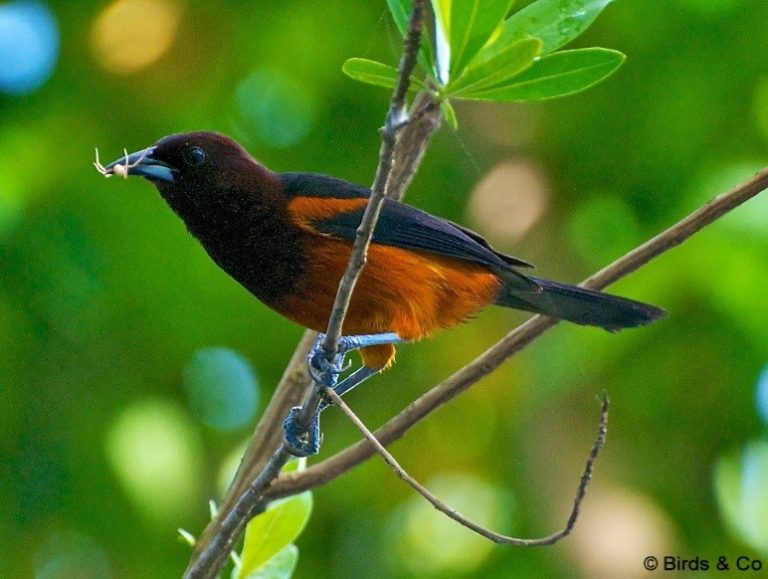
Martinique Oriole, with hood appearing dark brown. © Birds & Co.
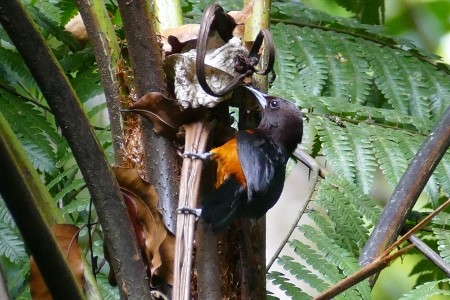
Martinique Oriole. (Martinique; May 2018.) © Marc Pommarel
Notes
Monotypic species.
IUCN Red List Status: Vulnerable.
One of Martinique’s two organizations dedicated to bird conservation is named for the Martinique Oriole: L’association Le Carouge.
References
BirdLife International. 2016. Icterus bonana. The IUCN Red List of Threatened Species 2016: e.T22724150A94851534. http://dx.doi.org/10.2305/IUCN.UK.2016-3.RLTS.T22724150A94851534.en. (Accessed May 19, 2019.)
Fraga, R. 2019. Martinique Oriole (Icterus bonana). In Handbook of the Birds of the World Alive (J. del Hoyo, A. Elliott, J. Sargatal, D.A. Christie, and E. de Juana, eds.). Lynx Edicions, Barcelona. https://www.hbw.com/node/62271. (Accessed May 19, 2019.)
Jaramillo, A., and P. Burke. 1999. New World Blackbirds: The Icterids. Princeton University Press, Princeton, N.J.
Raffaele, H., J. Wiley, O. Garrido, A. Keith, and J. Raffaele. 1998. A Guide to the Birds of the West Indies. Princeton University Press, Princeton, N.J.
Wauer, R.H. 1996. A Birder’s West Indies: An Island-by-Island Tour. University of Texas Press, Austin.
